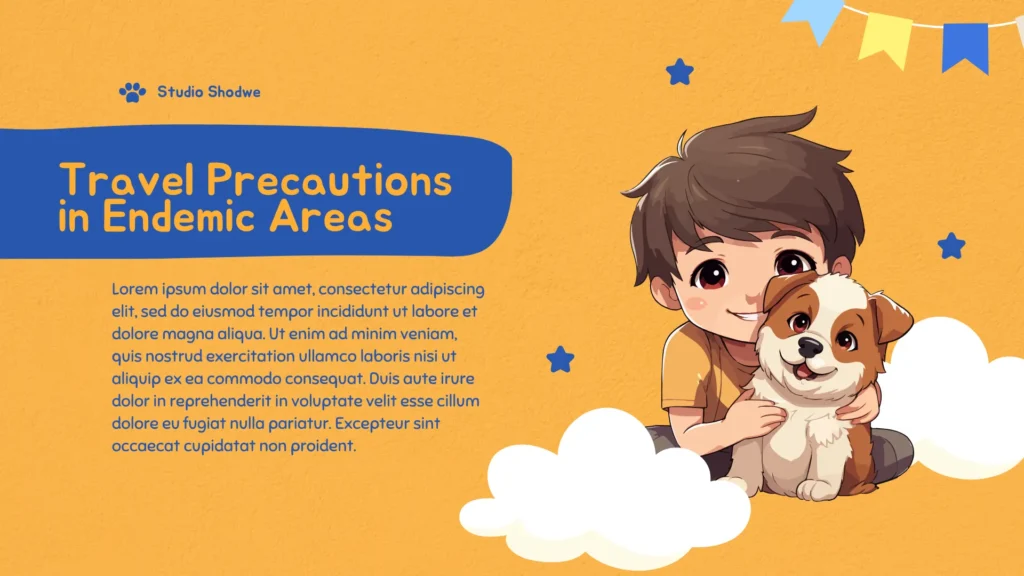Mango Worms in Dogs typically manifest as visible bumps or lesions on their skin, which are usually accompanied by severe itching and discomfort.
Dogs suffering from this condition might appear restless and frequently scratch the affected areas.Identifying Symptoms of Mango Worm Infestations
The primary indicators of mango worm infestation are the noticeable bumps or lesions on a dog’s skin, coupled with intense itching. These symptoms can lead to significant discomfort and agitation in dogs.
Effective Treatment Options
The treatment for mango worm infestation involves the precise removal of the larvae by a veterinarian. This is followed by a thorough cleaning of the affected area and the application of antiseptic solutions to ward off potential secondary infections.
To alleviate symptoms and facilitate recovery, veterinarians often prescribe anti-inflammatory medications that help reduce pain and swelling.
Preventive Measures to Consider
Key preventive strategies include regular grooming of the dog and avoiding areas known to be infested with mango worms. These measures are crucial in preventing the occurrence of mango worm infestations and ensuring the health and well-being of your pet.

By understanding the symptoms and following through with appropriate treatment and preventive care, you can protect your dog from the discomforts of mango worm infestations and ensure a quick and smooth recovery.
Guide to Recognizing and Treating Mango Worms in Dogs
Mango worms, scientifically known as Cordylobia anthropophagy, are parasitic entities that primarily afflict dogs in certain regions, notably sub-Saharan Africa.
Also read: Guide to Recognizing and Treating Mango Worms in DogsThese parasites pose a considerable health threat to canines, causing significant discomfort.
Causes of Mango Worm Infestations
Dogs may contract mango worm infestations through direct contact with eggs laid by flies in contaminated soil or plants. The risk of infestation increases for dogs in endemic areas or those not maintained in clean and groomed conditions.
Mango Worms’ Presence in the US
While mango worm infestations are rare in the United States, they are prevalent in African nations such as Uganda and South Africa. Dogs in these regions are at a heightened risk.
Infection Process of Mango Worms
The mango worm cycle begins when eggs, laid in soil contaminated with feces or urine, find a canine host.
Dogs playing in dirt are prone to contact these eggs, leading to the worms burrowing into their skin, causing irritation, and ultimately forming boils that house the developing larvae.
Identifying Mango Worm Symptoms in Dogs
| Symptom | Description |
|---|---|
| Visible Skin Lesions | Dogs may show raised bumps or lumps on their skin, which appear red, swollen, or may discharge fluid. |
| Itching and Scratching | Infested dogs typically exhibit severe itching, scratching, and may rub against objects to relieve discomfort. |
| Swelling and Pain | As the infestation progresses, affected areas may swell, causing pain and possibly affecting the dog’s mobility. |
| Secondary Infections | The infestation can lead to open sores that may become infected, exacerbating the dog’s discomfort with symptoms like pus and foul odor. |
Understanding these signs and the lifecycle of mango worms can aid in the timely and effective treatment of this distressing condition in dogs.
Read more: Whats-special-about-long-nosed-catsManaging Mango Worms in Dogs: Essential Veterinary Guidance
Mango worms in dogs are a serious parasitic infestation requiring immediate attention. Here’s a simplified guide to understanding the symptoms and ensuring proper treatment through professional veterinary care.
Early Detection of Symptoms
Familiarize yourself with the common signs of a mango worm infestation, such as noticeable skin lesions, persistent itching, scratching, swelling, and potential secondary infections. Early recognition of these symptoms can facilitate swift and effective treatment.
Scheduling a Veterinary Consultation
If you suspect mango worm infestation, promptly contact your veterinarian to schedule an appointment. Be prepared to discuss the symptoms you’ve observed and any recent changes in your dog’s behavior or environment.
Accurate Diagnosis by a Professional
During the visit, your vet will conduct a thorough examination of your dog, which may include checking affected areas and possibly taking skin samples. This step is crucial to confirm mango worm infestation or rule out other causes of the symptoms.
Developing a Treatment Strategy
After diagnosing, the veterinarian will tailor a treatment plan specific to your dog’s needs. This plan will detail the treatments, their potential side effects, and what you should anticipate during the recovery process. It’s vital to follow the vet’s instructions carefully.
Administering Professional Treatment
Depending on the severity of the infestation, treatment options may include manual removal of worms, medication for any infections or discomfort, or even surgery in severe cases. These procedures should always be performed by qualified veterinary professionals.
Post-Treatment Care and Follow-Up
Post-treatment, your veterinarian will provide instructions on caring for your dog, administering medications, scheduling follow-up visits, and tips for preventing future infestations. Adhering to these guidelines is essential for your dog’s recovery.
Maintaining Communication with Your Veterinarian
Keep in regular contact with your vet throughout your dog’s treatment period. Report any new developments or concerns regarding your dog’s health or behavior. Open communication is key to adapting treatment plans and ensuring the best possible outcome.
Also read: Maintaining Communication with Your VeterinarianSeeking timely veterinary intervention is crucial for effectively managing mango worm infestations in dogs. Trusting your vet’s expertise and following their recommendations can greatly enhance your dog’s chances for a full recovery.
Effective Management of Mango Worm Infestations in Dogs
Dealing with mango worm infestations in dogs requires various treatment options, guided by the severity of the case and specific circumstances.
Consulting with a veterinarian for an accurate diagnosis and a tailored treatment plan is essential. Here’s a simplified overview of the common treatment methods.
Key Treatment Approaches
Special Injections: Veterinarians may use targeted injections like epinephrine and lidocaine to eliminate mango worm larvae effectively.
Suffocating the Larvae: This method involves removing scabs and applying substances like sterile wax to suffocate the larvae, specifically targeting visible black dots.
Manual Extraction: For mild cases, veterinarians might manually remove worms using tools like forceps, a procedure that should only be performed by trained professionals.
Surgical Removal: In severe cases, surgical intervention may be necessary to remove worms and address any complications, followed by comprehensive post-operative care.
Medication for Secondary Issues: To address secondary infections or alleviate discomfort, medications such as antibiotics and painkillers may be prescribed, helping to reduce swelling and fight infections.
Wound Management: Proper care of any resultant wounds is critical, involving cleaning, medicating, and possibly dressing the wounds, with guidance provided for home care.

Follow-Up and Preventive Care
Regular Check-Ups: Following treatment, regular veterinary check-ups are crucial to ensure complete recovery and prevent recurrence. This may include additional treatments or preventive measures.
Preventive Strategies: To maintain your dog’s health and prevent future infestations, consider the following:
- Regular Grooming: Establish a grooming routine that includes brushing, bathing, and thorough inspections of the dog’s skin and fur.
- Clean Living Environments: Regularly clean and disinfect your dog’s living areas, including bedding and toys, to minimize parasite presence.
- Avoid Risk Areas: Be cautious in or around areas known for mango worm activity, avoiding dense vegetation during peak seasons.
- Monitor Outdoor Activities: Watch your dog’s activities outdoors, especially in areas prone to infestation, preventing contact with potentially infested soil or plants.
- Stay Informed: Keep up-to-date with information on mango worms and other potential parasites, continually learning about preventive techniques and local infestation trends.
By following these guidelines and maintaining open communication with your veterinarian, you can effectively manage mango worm infestations in dogs and ensure the best possible health outcomes for your pet.
Preventing Mango Worm Infestations in Dogs
Preventing mango worm infestations in dogs revolves around maintaining a clean environment and providing a balanced diet.
Here’s a straightforward guide to ensure your dog’s living space is hygienic and their diet supports their overall health.
Hygiene Practices for a Healthy Environment
Regular Cleaning: Regularly clean your dog’s living areas, including vacuuming indoor spaces and cleaning outdoor areas, to remove potential mango worm eggs.
Disinfection: Use safe disinfectants to clean surfaces and dog accessories, reducing the likelihood of infestation.
Nutritional Guidelines to Boost Health
High-Quality Food: Feed your dog high-quality food that meets their specific nutritional needs. A robust immune system, supported by a balanced diet, can fend off parasites effectively.
Supplements: Consult your veterinarian about adding supplements like Omega-3 fatty acids to your dog’s diet to enhance their skin health and immunity.
Fresh Water: Ensure constant access to fresh, clean water to keep your dog well-hydrated, which is vital for maintaining healthy skin.
Cooked Diet: Avoid feeding your dog raw or undercooked meats that could increase the risk of parasitic infections. Ensure all food is thoroughly cooked.
Strategies to Avoid Mango Worm Exposure
Research Infestation Patterns: Be aware of areas with high mango worm activity and avoid these places, especially during peak infestation periods.
Use Safe Pathways: When walking your dog, stick to clear pathways and trails less likely to be infested.
Travel Precautions in Endemic Areas
Veterinary Advice: Before traveling to known infestation zones, consult your veterinarian for preventive measures.
Insect Repellents: Use vet-approved insect repellents on your dog to minimize the risk of mango worm eggs attaching to them.
Leash and Monitor: Keep your dog on a leash in unfamiliar areas to prevent them from exploring high-risk environments.
Avoid Stray Contacts: Prevent your dog from interacting with stray animals that might be carriers of mango worms.

Education and Awareness
Stay Informed: Continuously educate yourself about Mango Worms in Dogs and other potential threats by researching and speaking with professionals.
Spread Awareness: Share knowledge about mango worm prevention with other pet owners to collectively reduce the risk of infestations.
Regular Vet Visits: Maintain regular veterinary check-ups and discuss the latest preventive strategies to keep your dog safe from parasites.
By following these guidelines, you can significantly reduce the risk of mango worm infestations in your dog, ensuring they remain healthy and comfortable.
FAQs: Mango Worms in Dogs
Can mango worms affect humans?
No, mango worms primarily target animals, especially dogs, and are not commonly known to infest humans.
Are mango worms common in all regions?
No, mango worms are predominantly found in specific regions, especially sub-Saharan Africa. Infestations are more likely if dogs are exposed to these areas or through the accidental transfer of worms via international movements.
Can I remove mango worms myself?
It is not advisable to remove mango worms yourself. For safe and effective removal, the expertise of a veterinarian is essential.
Can my dog get reinfected with mango worms?
Yes, dogs can become reinfected with mango worms if they encounter the eggs or larvae again. Implementing preventive measures is crucial to reduce the likelihood of reinfection.
Can mango worms be prevented entirely?
While it is challenging to completely eliminate the risk, adopting preventive measures such as regular grooming, maintaining a clean living environment, and avoiding known infestation areas can significantly reduce the chance of mango worm infestation.
Can a dog survive mango worms?
Although mango worms are not typically life-threatening as they inhabit the skin and not internal organs, they can cause severe discomfort if left untreated. It is crucial to address any infestation promptly to avoid undue suffering for your dog.
How do I know if my dog has mango worms?
Regular skin inspections during grooming can help spot signs of Mango Worms in Dogs, such as bumps, redness, or sores. If you notice any unusual symptoms, consult a veterinarian for a comprehensive evaluation.
What food causes Mango Worms in Dogs?
Worms in dogs, such as tapeworms and roundworms, can be transmitted through contaminated fresh produce or undercooked meat from intermediate host animals like sheep, beef, or pork.
Conclusion
Understanding the causes and symptoms of mango worm infestations, seeking timely veterinary care, and implementing preventive strategies are key to protecting your dog from these parasites. Additionally, helping your dog remain calm at the vet can facilitate more effective treatment and advice.
